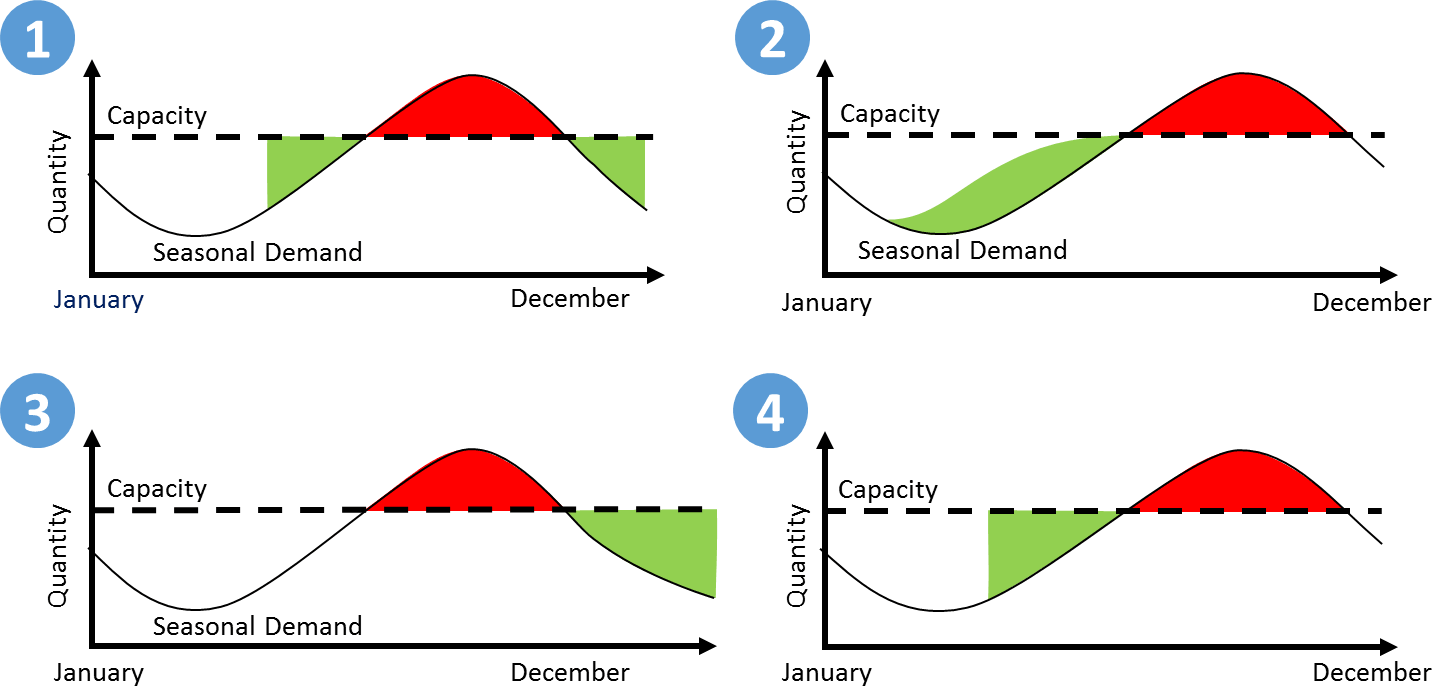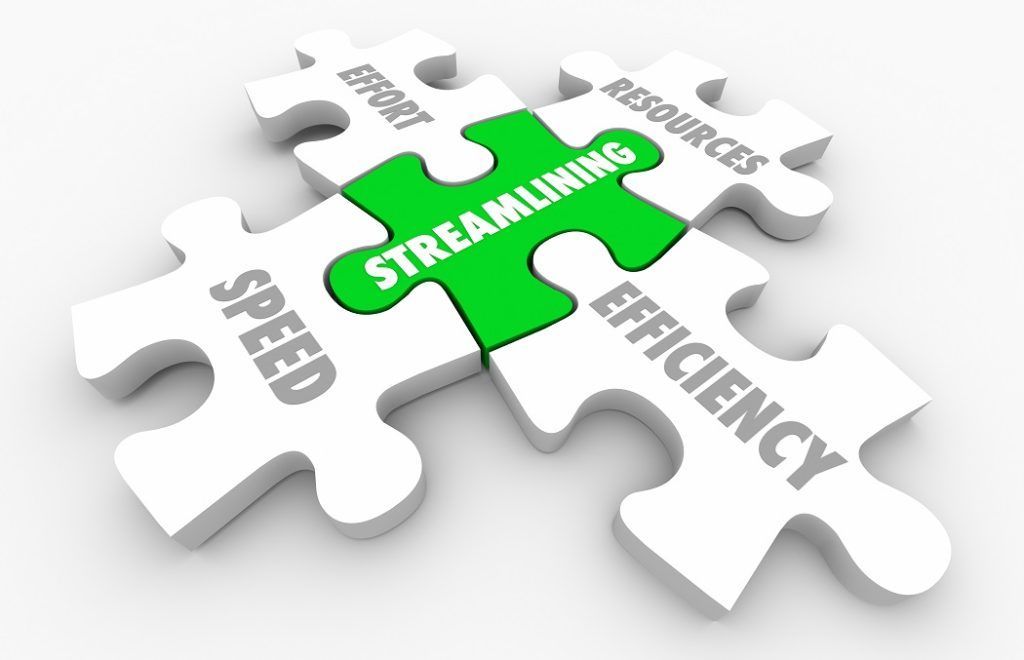What is Seasonal Demand Forecasting? The Necessity for eCommerce Companies to Forecast Seasonal Demand and 7 Ways to Predict it in 2024

Some products may increase or decrease in demand depending on the season; this variation is known as seasonality. Therefore, the need for some products might experience significant peaks and valleys due to this phenomenon, making inventory monitoring extremely difficult. When Americans shop most of the time during the holidays, most industries experience a massive increase in demand. 45% of survey participants who planned to spend more than $100,000 this holiday season planned to indulge, according to a McKinsey study. Seasonal items need to be carefully managed to account for any events or trends that could affect their popularity.
Even though it may seem unpredictable, businesses can manage these changes by fine-tuning their seasonal demand forecasting with reliable estimates. Product demand forecasting is one of the most critical responsibilities for eCommerce organizations to optimize inventory management. The B2B, B2C, and DTC sectors fall under this category. Demand forecasting traditionally uses an algorithm to examine historical sales data to anticipate future sales. However, a characteristic that might be challenging to forecast—seasonality—complicates this projection.
126″ measures can significantly impact inventory averages and are more challenging to identify. As a result, forecasting seasonal demand might resemble tossing darts into the dark and praying they land close to the board for most eCommerce firms. The guessing games associated with predicting seasonal demand can be put to rest for eCommerce firms with suitable forecasting approaches, processes, and technologies. Learn how to improve your eCommerce business, handle seasonal requests, and drive development.
- What Exactly is Seasonal Demand?
- What Does Seasonal Demand Forecasting Entail?
- Why is it Necessary for eCommerce Companies To Forecast Seasonal Demand?
- Why is Forecasting Seasonal Demand So Complicated?
- How Can Seasonal Demand Forecasting Help You Increase Your Competitiveness?
- How Can Seasonal Demand be Predicted in 2023?
- Identify The Products Whose Demand Is Affected By The Season
- Know the Seasons of Your Customers
- Predict Those Peaks' Respective Sizes About Average Demand With Accuracy
- Keep an Eye on Your Supply Chain
- Describe Current Trends in Your Reporting
- Recognize the Degree of Uncertainty Surrounding the Predicted Peaks
- Streamline the Procedure
- Conclusion: Utilize WareIQ To Anticipate Seasonal Demand
- Seasonal Demand: FAQs
What Exactly is Seasonal Demand?
A time series having recurring or predictable patterns of demand as a result of seasonal events is said to have seasonal demand. These patterns frequently make it more difficult for firms to predict demand correctly because they might recur over days, weeks, months, or quarters. In India, examples of seasonal demand include religious holidays like Deepawali, Christmas, or Ramadan, yearly celebrations like Valentine’s Day or Friendship Day, and seasonal weather patterns like snow in the winter and a scorching environment in the summer. This all is taken care of separately under the fulfillment strategy for the holiday season.
WareIQ, an eCommerce fulfillment company, empowers online brands with a superior-tech platform to compete with Amazon like service levels by bringing their average delivery timelines from 5-10 days to 1-2 days.
What Does Seasonal Demand Forecasting Entail?
One of the trickiest aspects of your inventory management systems to master is seasonal demand forecasting. It’s annoying to say, but it happens every year: a product’s demand will be consistent throughout the year, but then, out of the blue, you’ll notice orders soar or collapse. Of course, you are not alone in your challenges, so rest assured. Additionally, we have some guidance from a top professional to assist you in handling your forecasts.
Inventory teams use seasonal demand forecasting to track the peaks and troughs in demand that particular products experience throughout the year. For instance, demand for traditional gifts will spike sharply before Christmas but decline quickly. While organizations may be aware of seasonal demand variations, controlling them can frequently be more difficult. Additionally, the entire supply chain may be impacted promptly if seasonal demand is not considered early in the ordering cycle.

Why is it Necessary for eCommerce Companies To Forecast Seasonal Demand?
Understanding the seasonal ebb and flow of product demand is essential for every eCommerce firm. However, this procedure is simple in some circumstances. For instance, a company that sells Christmas confectionery will anticipate a rise in sales as the holiday season approaches. This inevitably means that they will require a unique holiday inventory plan.
However, seasonality can also be far more complicated in other situations. For instance, it might be more challenging for an online retailer of flower seeds to identify distinct seasons when sales will rise. Seasonal demand may cause severe problems with inventory planning depending on where the purchasers are located, the weather that year, and the market for specific flower species. Nevertheless, predicting seasonal demand is essential to an online company’s profitability. Based on seasonal demand insights, brands can:
- Include future labour requirements.
- Model ideal supply levels based on the season and plan effective advertising campaigns.
- Make plans to address supply chain issues.
Why is Forecasting Seasonal Demand So Complicated?
The difficulties retailers have with forecasting are suggested by the following instances. The following are some difficulties in predicting seasonal demand:
Seasonal Peaks and Short Life Cycles
It is too late for a retailer to fix a seasonal forecast issue. The seasons and lifecycles of seasonal products should be longer to make changes. Due to inventory constraints, retailers either lose sales and consumer satisfaction or must make significant and expensive markdowns.
Suggested Read: How to prepare for Peak Season Shipping in 2023?
Seasons Vary From Year To Year
Product seasons frequently don’t adhere to exact patterns year after year. In addition, other lunar holidays, like Easter, can occur on different days, weeks, or even months. In truth, some events only take place in specific years. It could be more reliable and result in an unexpectedly expensive sales season to forecast seasonal products using historical sales data.
No Previous Sales Data
The seasonal schedule for this year varies from previous years, more often than not. For instance, evolving consumer tastes necessitate brand-new Halloween costumes every year, fresh seasonal goods, or even entirely new product lines that are popular this season. Retailers may need to make planning decisions in the dark with previous data.
Concealed Seasonality
There are occasions when a product category doesn’t typically peak during a certain period of the year yet has specific products whose demand does. Because they are not obvious candidates for seasonal products because most retailers don’t operate at the product level, products that you would ordinarily consider evergreen may experience sales increases. For instance, even though electrical products might not initially seem to be Christmas-related, demand for power bars increases over the holiday season. Retailers lose sales because more product is needed to satisfy demand.
How Can Seasonal Demand Forecasting Help You Increase Your Competitiveness?
Businesses needing help to predict seasonal demand effectively frequently need help with their stock levels. They risk stockouts and lost revenues during periods of peak demand if they underestimate. Additionally, if they overestimate, companies can avoid having extra inventory at the end of a season that needs to be sold off. As a result, if you can predict seasonal demand precisely, you’ll have an advantage over your rivals and enjoy the benefits. They are listed below:
Leverages Seasons of Increased Demand
By planning for seasonal variations, you can ensure you have enough stock to capitalize on spikes in product demand throughout the year’s busiest seasons. However, you primarily rely on your busy seasons to generate revenue. In that case, you must be at the top of your game and provide the best possible product availability throughout these times.
Prevents Having Too Much Stock
Additionally, avoiding overestimating seasonal demand variations in your estimate is crucial. Instead, it would be best if you made the appropriate inventory investments to maintain a healthy balance sheet and flowing cash flow. By preventing surplus stock at the end of a season, you avoid deciding between selling it off at a loss or bearing the weight of high carrying costs while waiting for demand to pick up again.
Places Orders and Notifies Suppliers in a Timely Manner
It’s simple to overlook how crucial it is to prepare your suppliers ready for changes in seasonal demand. Intelligent companies will collaborate closely with their suppliers, letting them know precisely what they need and giving them plenty of time to respond. In addition, your suppliers can help ensure deliveries to satisfy consumer demand by scheduling orders in advance.
Makes Wise Stock Selections
You can optimize stock levels and make informed judgements on safety stock levels and replenishment procedures with realistic demand estimate that take seasonality into account.
How Can Seasonal Demand be Predicted in 2023?
Forecasting seasonal demand is a continuous activity. Your requirements may alter annually depending on the best-selling items and even what goods consumers require at any particular time. You can, however, employ several techniques to enhance your seasonal demand forecasts. They are listed below:
Identify The Products Whose Demand Is Affected By The Season
Remembering seasonality only relates to the percentage of demand variation explained by a recurring pattern is crucial. As a result, you need to find demand patterns that regularly occur over time. Consider these inquiries while analyzing seasonal demand for each stock item:
- Do you notice a consistent demand pattern over time? If there is a seasonal pattern, you can rely on it by analyzing the association between each year.
- Are you sure that the shift in demand is a seasonal variation rather than merely a long-term increasing or decreasing trend? De-seasonalize the demand by, for example, ignoring the seasonal pattern and determining whether demand is still rising.
- Does the seasonal demand require a different approach to the product? Examine the variance’s amplitude.
Know the Seasons of Your Customers
Make sure you thoroughly understand your clients’ seasons as you get ready to estimate seasonal demand effectively. When should you stock up on those essential supplies? For instance, in 2021, Christmas gift-buying began as early as the end of October. Even in regions where students might return to school in mid to late August, almost 59% of back-to-school expenditure may occur before the end of July.
Learn about the seasons of your clients and how they have changed. For example, many people have started shopping earlier due to adjustments related to the pandemic to avoid supply chain issues and shortages that could prohibit them from receiving their essential supplies. In addition, many individuals instinctively begin planning and purchasing early for significant seasons and changes. Therefore, a key component of forecasting seasonal demand is understanding the seasons of your clients.
Predict Those Peaks’ Respective Sizes About Average Demand With Accuracy
Before employing it in a forecast calculation, you should alter the demand if an item’s seasonality is significant. To keep the data precise and straightforward for future forecasting, it is best practice to keep seasonal demand and other variable components distinct from your base demand estimates.
Keep an Eye on Your Supply Chain
It’s crucial to consider your supply chain when you predict seasonal demand and client needs. In many circumstances, you need to account for longer-than-usual shipment durations or more work for shipping professionals, which could cause shortages. You can better meet client needs and ensure you’re ready for upcoming sales increases by paying close attention to supply chain difficulties.
Describe Current Trends in Your Reporting
Looking at historical seasonal demand, you can get a fair indication of what sales might be like in the current year, but it needs to tell the complete story. Current trends, shortages, and consumer needs can significantly impact spending and the inventory you may need on hand. For instance, during the years of the epidemic, technology sales increased, which surprised many businesses. Many homes made investments in technology to make it easier for parents and workers to connect digitally.
During stay-at-home orders, when more people chose comfortable clothing and athletic gear over the typical office trends, fashion sales also changed significantly. You can more accurately predict the anticipated shape of sales for the upcoming season and better manage your inventory by integrating information about current trends in your seasonal demand forecasting.
Recognize the Degree of Uncertainty Surrounding the Predicted Peaks
A demand forecast is rarely 100% correct, especially when seasonality is included, because markets are more dynamic than ever. It is crucial to take your forecast’s accuracy into account. Finding demand outliers and looking into how they affect your calculations is only one method for increasing forecast accuracy. Calculating forecast error can also determine the degree of mistake in your earlier demand projections. This allows you to account for it in subsequent ones and modify stock rules, such as safety stock levels or reorder points.
Streamline the Procedure
You should automate the process of estimating seasonal demand wherever feasible. What you need is software that will examine current patterns and directions, previous seasonal shifts, and other data about your overall sales and incorporate that data into thoroughly examining what your seasonal needs will probably include in the upcoming year. Automating the process can eliminate the uncertainty surrounding your seasonal inventory requirements.
Your platform can inform you of what you need when to order it, and whether you need to make adjustments to your plans in response to supply chain problems or look for new suppliers for some of the raw materials you require. By automating the procedure, you can also be sure that you’ll get important reminders when it’s time to order seasonal goods—a process that, this year, might need to be started earlier than usual.
Conclusion: Utilize WareIQ To Anticipate Seasonal Demand
If predicting seasonal demand still seems complicated, consider investing in inventory optimization solutions. You can save time and avoid the headache of manually calculating seasonality and forecasting demand with the help of automation solutions. With the help of these automation technologies, you can get up-to-date, precise, and thorough demand forecasts that consider seasonality, trends, supplier lead times, and delivery dates.
The secret to managing seasonal demand changes is accurate demand forecasting. You can obtain precise demand forecasts using WareIQ’s unique methodology based on previous sales data and customer purchasing patterns. This enables you to plan your inventory reorders so that you don’t unintentionally run out of stock or wind up with too much inventory.
WareIQ enables you to track performance down to the SKU level, allowing you to predict which products may experience a spike in demand during particular seasons. You can then focus your inventory planning on a select few items. Additionally, the inventory management software continuously monitors your inventory levels. It uses data analysis to forecast how long the stock will last and when you need to order more inventory. Additionally, the automated reorder point notifications ensure you always remember to place a reorder.
One of the best features is that WareIQ provides a full-service fulfillment solution, allowing you to entrust WareIQ with managing and storing your inventory and fulfilling your orders. Additionally, the team will be able to effectively handle seasonal demand spikes if you let WareIQ know about impending increases in order volume. This will save you from having to hunt for last-minute solutions.














